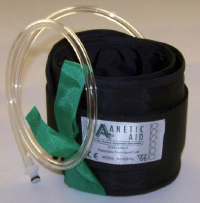Medical device regulators have issued four warnings in just seven days amid fears over faulty equipment that could lead to bleeding, airway obstruction among babies and children, life-threatening allergic reactions and problems with joint replacement surgery.
The Medical Device Warnings come from the Medicines and Healthcare products Regulatory Agency (MHRA) and cover four different pieces of equipment or equipment ranges from four manufacturers, including one company that has recently stopped trading.
The first device relates to neonatal and paediatric endotracheal tube clamps or holders manufactured by the now-defunct EMS Medical.
The devices are used to secure endotracheal tubes when used on babies or young children.
The alert warns that the composition of the plastic used to make the device was changed to a DEHP-free material; a move that affected the physical properties of these components, resulting in an increased risk of slippage or obstruction. This could lead to a potential loss of airway or airway obstruction as a result of over-tightening.
As the company has gone into administration, it is not known how many devices were sold and the MHRA is advising all organisations using the equipment to take them out of operation and dispose of them.
A second alert covers six-use tourniquet cuffs of all sizes manufactured by Anetic Aid. It is claimed the reusable devices could cause excessive bleeding as there have been reports of the inlet tube disconnecting from the body of the tourniquet during operation.

One of the warnings relates to six use tourniquet cuffs manufactured by Anetic Aid
Since the claims, the manufacturer has issued a Field Safety Notice and has changed the design of the equipment to include a safety clip to hold it in place. The MHRA advises inspection of all devices to ensure they include the new clip.
Also sparking concern are central venous and haemodialysis catheters manufactured by Arrow International, a division of Teleflex.
It is claimed use of the Arrowg+ard Blue and Arrowg+ard Blue Plus models could result in a risk of severe anaphylactic reaction if used on patients with an allergy to chlorhexidine, silver sulfadiazine, and/or sulfa drugs.
The contra-indication for patients with known hypersensitivity does not appear on the package lid, but is included in the Instructions for Use that accompany each device. However, unless these are consulted, the device may be inadvertently used in a patient with a known allergy.
The manufacturer issued a Field Safety Notice in May, but is awaiting confirmation from users that they have taken action to quarantine devices and contact the company for further instructions.
The final alert continues to highlight ongoing concerns over joint replacement implants.
It comes after a review of scientific literature by the British Orthopaedic Foot Ankle Society found the Ankle Evolution System (AES) from Transystem had a higher than expected frequency of osteolytic lesions.
The reasons for the anomaly are unknowned, but the manufacturer has stopped distribution of the device. It is estimated that approximately 450 were implanted in the UK between 2002-2009 and healthcare providers are advised to identify all patients. They should then be followed up annually, or more often if they present with minor asymptomatic lesions, with X-rays taken of the joints where appropriate. It adds that CT scans should be provided for patients presenting with increasing pain and surgical intervention should be considered for symptomatic or larger/multiple lesions. Trusts are also advised to report all primary or revision ankle joint replacement surgeries to the National Joint Registry of England and Wales.
For more information on the alerts, click here




